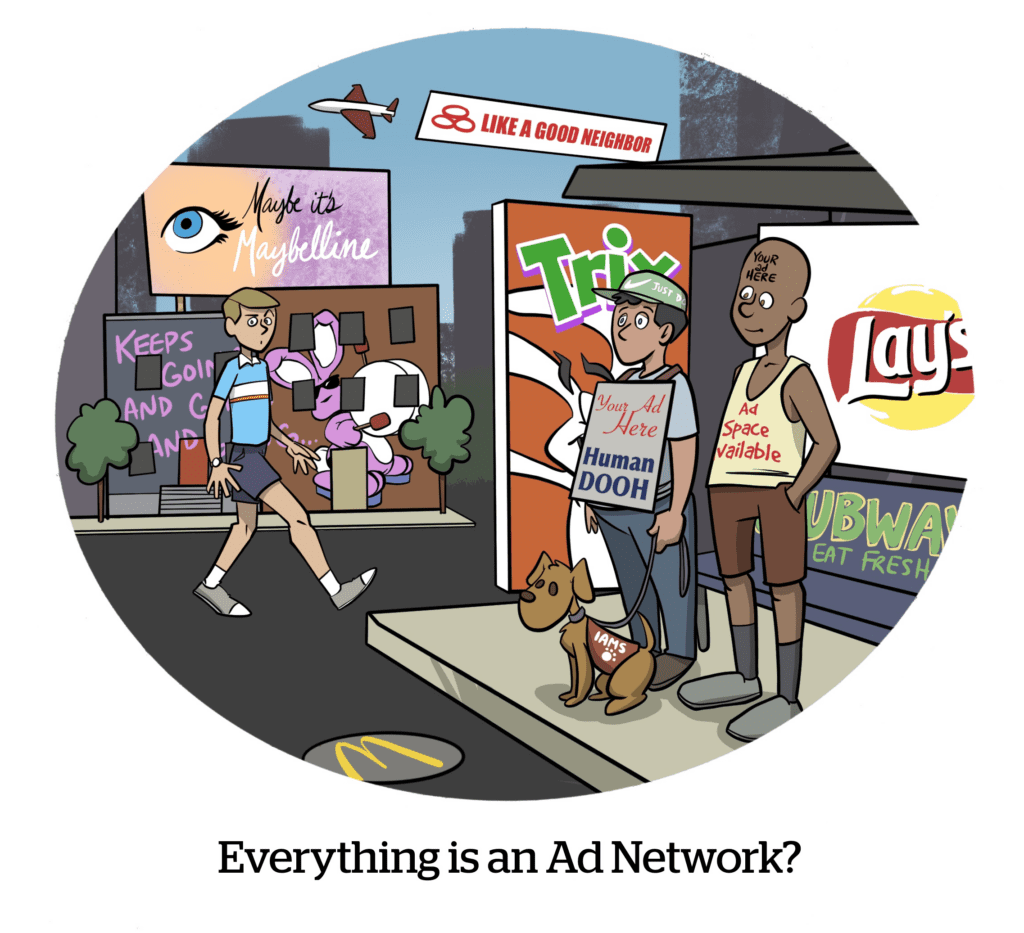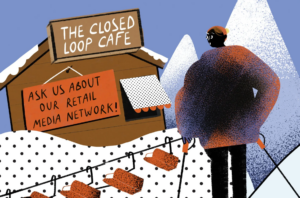Over the past decade, fizzy newcomers with social-native branding and keywords like “kombucha,” “prebiotic,” “probiotic” and “protein” became billion-dollar brands. Sugar-free rivals like Poppi and Olipop became ubiquitous in US stores. The outsider brand National Beverage Corp. broke through with La Croix.
Meanwhile, big beverage companies were dumping their juices. In 2020, Coca-Cola sold off its Odwalla juice line; a year later, Pepsi divested a majority stake in its Tropicana and Naked juice lines.
It seemed, for a moment, that beverage aisles and refrigerator sections in chains across the country were cracking open for startups and independent brands to compete with Coca-Cola, Pepsi and Dr Pepper.
Can’t spell “consolidation” without soda
The big three – Coca-Cola, Pepsi, Dr Pepper – have been working to shut down these upstarts. In the past few years, big beverage has made acquisitions and heavily advertised their own products with all the right new keywords to build back their hold on beverage sales.
Each of the big three soda makers reported their quarterly earnings in the past couple of weeks, and their reports highlight the measures they’ve taken to secure their own SKUs and box out possible challengers.
For example, there was Pepsi’s $2 billion acquisition of Poppi, a sugar-free prebiotic soda startup, earlier this year. A prebiotic Pepsi will now debut in the fall. And Coca-Cola recently introduced the Simply Pop prebiotic soda line.
But the most popular strategy right now is for the big brands to invest and then potentially acquire new rivals over a longer horizon.
While it’s not soda, the best example of this trend is Coca-Cola’s 2020 acquisition of Fairlife, a filtered milk brand that is relatively higher in protein and lower in sugar than typical milk. Coke had previously been a minority shareholder. Fairlife quickly became a key part of Coke’s growth story – the word “protein” is used in consumer grocery brand investor calls akin to how “AI” is used by tech companies – and its revenue has exceeded expectations so greatly that, earlier this year, Fairlife became Coke’s largest ever acquisition based on performance incentives.
In 2022, Pepsi made a $550 million investment in the energy drink brand Celsius, following its 2020 acquisition of Rockstar Energy drinks. CEO Ramon Laguarta also cited Pepsi’s joint venture with Starbucks, which, in March, began selling Starbucks-branded, Pepsi-distributed energy drinks.
Dr Pepper previously invested in GHOST, a sugar-free energy drink, and as of last October plans to fully acquire the company. When Dr Pepper chose to dip a toe in the market for water-enhancing drops and powders in 2017, it made a small investment in a brand called Dyla. And in the past week it acquired Dyla entirely.
“No doubt consumers are looking for more functional attributes in their beverages and protein is part of that trend,” Keurig Dr Pepper CEO Tim Cofer told investors. “We feel good about our track record there, including how we’ve been creative and capital efficient in how we go about that.”
Leveraging big soda’s scale
Having reacquired acres of shelf space, the big three soda brands have their own particular challenges, quirks and opportunities to deal with, generally with marketing right at the center of things.
For example, Coca-Cola may be thrilled with its acquisition of Fairlife, but the dairy business comes with all sorts of complications. Dairy products can’t be easily transported across the country. [For instance, the formerly regional dairy brand Tillamook told AdExchanger earlier this year that when it began adding national grocery stores about five years ago, it encountered the problem of ice cream packages exploding when flown over the Rocky Mountains.]
Fairlife is building a new manufacturing plant in New York, which will come online in 2026 and should help the brand meet demand. Currently, there’s a bottleneck in terms of production, so Fairlife inventory is low. What that means, though, is that Coca-Cola pulls back on advertising for Fairlife when the shelves are empty.
During the most recent earnings call, Coca-Cola’s investors asked about the ramifications of this pullback. Are the company’s competitors being given a chance to seize market share and consumer mind share by heavily advertising while Fairlife is mostly paused due to capacity constraints?
Dr Pepper has its own constraints, because it invests more heavily in upfront store delivery and shopper marketing operations.
“I’m a big believer in the power of DSD,” said CEO Tim Cofer, referring to the company’s “direct-store-delivery” program, which means Dr Pepper employees do more than other brand employees when it comes to store displays and setups.
The DSD strategy is a “critical and really scarce asset” in the beverage category, Cofer said. Dr Pepper’s expansion to new states is slower and must be backed by higher investments in warehousing and delivery networks.
However, he added, it leads to a “sustainable competitive advantage” over time.
Pepsi, for its part, is in the early stages of a massive consolidation of its beverage and snack businesses – Pepsi and Frito-Lay, respectively – into one shopper marketing unit. Previously, the two groups had totally separate go-to-market relationships and shopper marketing lines, Laguarta said, despite being under the same Pepsi roof.
This consolidation is part of Pepsi’s effort to wring billion-dollar efficiency savings per year, much of it from marketing. And just like in-store shopper marketing budgets will be consolidated (i.e., reduced), Pepsi is now planning to hold the line on advertising and marketing spend, Laguarta told investors. After five years of marketing increases, he said this year Pepsi will be holding that budget steady and looking for “better productivity” (again, a codeword for spending less in total).
“We have enough resources there to defend the core and also build some incremental platforms for growth,” he said.
The fluid macro picture
While the big three soda brands have their own particular shopper marketing angles, what they have in common is a tumultuous economic environment.
“The tariff situation is a bit fluid,” said Dr Pepper’s Cofer.
“Obviously, it’s a bit volatile,” Pepsi CFO Jamie Caulfield told investors.
These are both comically understated descriptions for their company’s rounds of price hikes, packaging changes and factory and international shipping route adjustments, all of which must be reworked based on ongoing global tariff alterations and trade deals.
Coca-Cola CEO James Quincey referred numerous times to what the company refers to as its “all-weather strategy.”
He means actual weather, in part. An early monsoon season in India, plus the India-Pakistan conflict and extreme weather in Mexico all affected Coca-Cola’s output in Q2, Quincey said.
But the kind of “agility,” he said, to change pricing and distribution market by market or shift its supply chain in an instant is the same whether it’s actual weather or whether it’s just bad news raining down from on high.
“Revenue growth management is a critical tool to segment our consumers and channels,” Quincey said, referring to the company’s sharpened ability to change prices, pack sizes and distribution based on the economic (or weather-related) realities on the ground.
“And we’re increasingly integrating the capability with our marketing expertise to drive transaction growth,” he added.

















